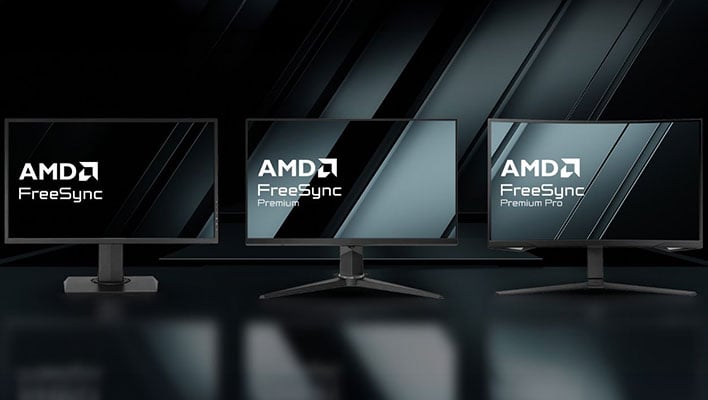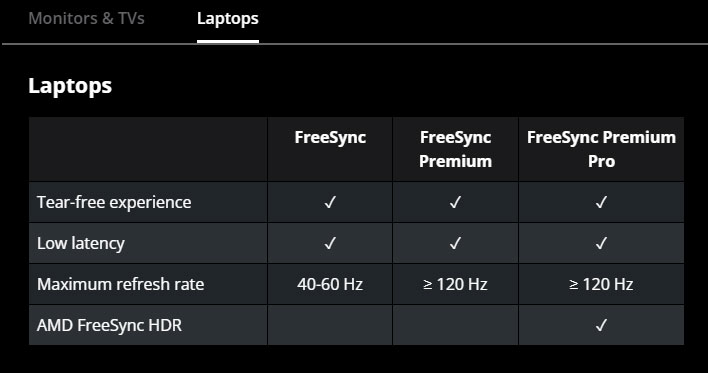AMD Raises The Refresh Bar For FreeSync Displays With Updated Specs

The one constant in this world is perpetual change, and that especially holds true in the realm of tech. Being able to adapt is key. As such, AMD is updating some of its FreeSync requirements to be more in line with the hardware and capabilities of today's displays, versus when AMD introduced its take on VESA's adaptive sync technology in 2015.
As many of you reading this already know, adaptive sync is a literal game changer, in that it allows a display to dynamically alter its refresh rate to match the frames (per second) being pumped out by your GPU. By keeping these in sync with one another, screen tearing is virtually eliminated, resulting in games appearing to run smoother.
To apply the FreeSync label to a display, be it a PC monitor, laptop screen, or television, manufacturers have to meet a certain set of requirements. The technology itself is royalty free, which is a key differentiator between NVIDIA's G-Sync technology, which is proprietary and requires a special hardware module (not to be confused with 'G-Sync Compatible', which entails enabling G-Sync on FreeSync monitors). However, there are specs requirements, and some of those just changed.
"AMD introduced AMD FreeSync in 2015 to enable tear-free, stutter-free experiences, and when 60Hz was considered great for gaming. Since then, games have become more demanding, graphics cards are much more powerful, while new display resolutions and technologies have become available for gaming," AMD explains.
"Gaming monitors at 120Hz were a rarity in 2015; today the majority of gaming monitors are 144Hz or higher, which clearly shows the upward refresh rate trend in the industry," AMD adds.

To keep up with the times, AMD is raising the baseline maximum refresh rate to 144Hz for monitors with a horizontal resolution of less than 3440 pixels, versus 120Hz previously. This applies to both monitors and TVs, and covers various resolutions such as 2560x1600, 2560x1440, 1920x1200, and 1920x1080.
That's for AMD's base FreeSync tier. For the FreeSync Premium and Premium Pro tiers, monitors with horizontal resolutions below 3440 pixels must have a maximum refresh rate of at least 200Hz (versus 144Hz previously). Displays with horizontal resolutions of 3440 pixels or higher can still qualify for the FreeSync badge at 120Hz (or higher), which is unchanged from before. Additionally, FreeSync HDR is required to be certified for FreeSync Premium Pro.

So far, AMD has only changed the specification requirements for monitors and TVs; laptop display specs are unchanged. For laptops, a display with a maximum refresh rate of at least 40-60Hz will suffice for the base FreeSync tier. For FreeSync Premium and FreeSync Premium Pro, they must support a max refresh rate of at least 120Hz. And as with monitors and TVs, FreeSync HDR is required for the Pro designation.
It's a little curious that AMD didn't up the ante for laptops, though that's likely because they're comparatively under powered next to gaming desktops with discrete graphics cards. That's not to say that gaming laptops are not fast or incapable of playing games. However, discrete GPU models in mobile form don't match the specs or performance of their desktop counterparts, in large part because heat dissipation is a trickier proposition in notebooks. Even so, we'll have to wait and see if the requirements end up changing on the mobile side too, at some point.

